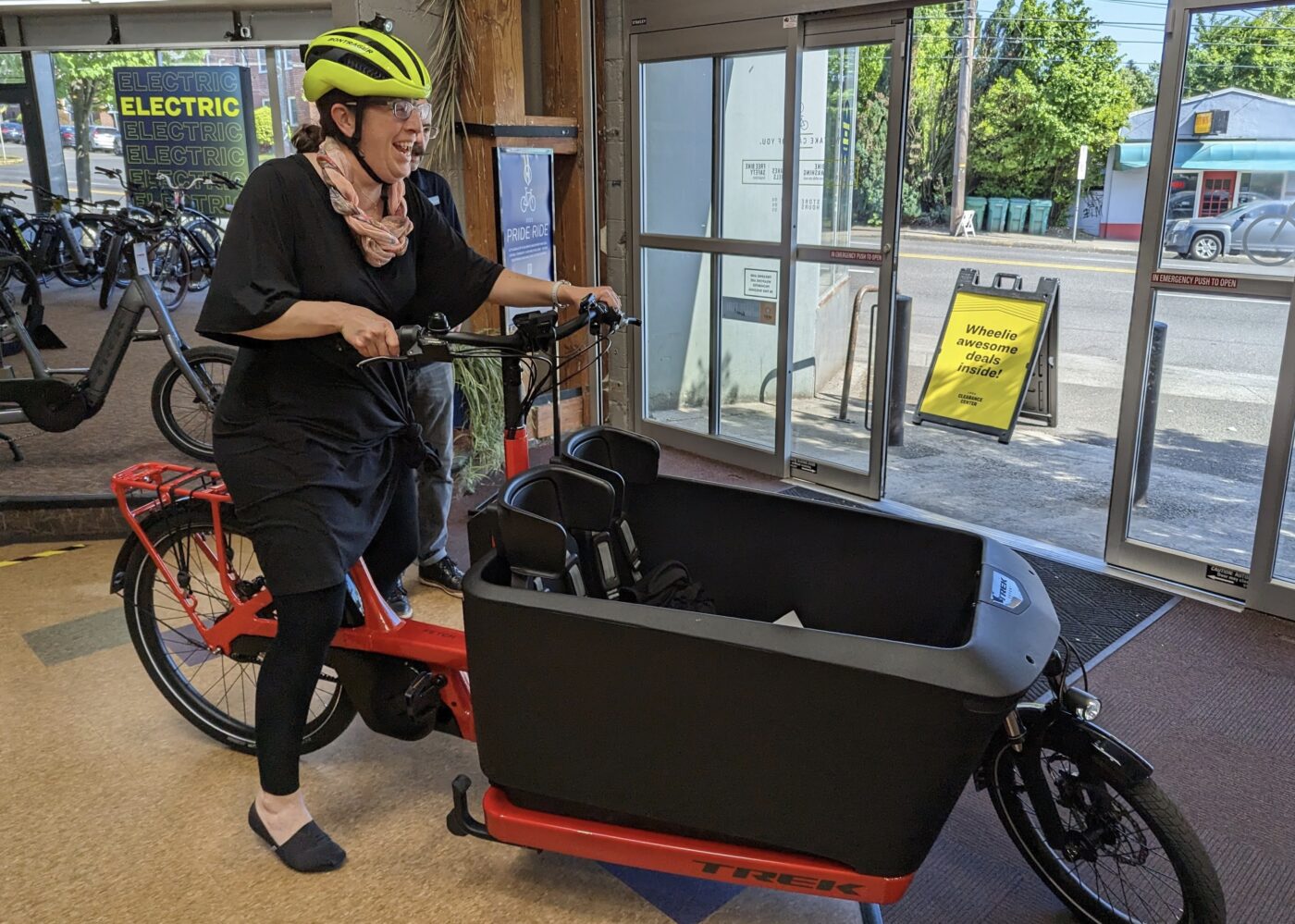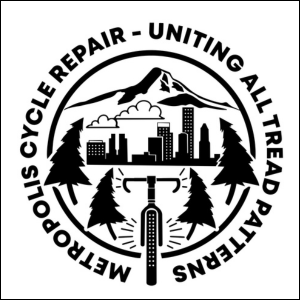There’s something magical about riding a bike. The feel of riding two wheels in alignment, leaning into turns, rolling along easily with simple effort, and coasting down hills such that it feels like flying. Once a person gets the hang of balancing on two wheels, they remember it forever, hence the expression, “it’s just like riding a bike.”
Many people are surprised to learn that front box cargo bikes (also known as “bakfiets” Dutch for “box bike”) feel nearly the same as riding any regular two-wheeled bike. From an untried glance, a front-box cargo bike appears unwieldy: one of the questions I get most often is “how do you ride that without tipping over?” Yet it’s the same question that could be asked of any two-wheeled bike, and the answer is also the same. I call it “bike magic.” Those two wheels in alignment just work.
Indeed, the feel of two wheels is the thing I miss most when riding my lovely three-wheeled cargo trike. A trike does not feel like riding a bike, and no one says, “it’s just like riding a trike” — because your body probably doesn’t remember what that feels like. In fact, I found it rather unnerving when I first test rode my cargo trike, because it didn’t feel like a bike.
In this post I’ll share differences between three and two-wheeled cargo bikes and why I prefer the latter.
The most noticeable handling difference for a trike vs bike is that the trike does not respond to leaning one’s body. If I am making a turn on my cargo trike, I can’t lean my body to make that turn, as I would on a two-wheeled bicycle. For my particular trike, the entire front box does the steering, so when I make a right turn, I turn the entire front box. In order to make that turn comfortably on a trike, I have to slow down significantly and I have a very wide turning radius. In situations where I am right-turning into a driveway, especially if the pavement is uneven or if I am crossing over a curb with a tiny lip on it, I usually need to swing left in order to turn right: this is because I want to hit that driveway or curb lip with both front tires at the same time. If one trike tire hits an uneven pavement section, or even a steep inclined driveway, the front box tilts very uncomfortably, as one wheel is up and the other down. (This tilt can even be annoying in “gutter bike lanes” where the bike lane is painted onto the tilted edge of roadway. On a trike, you can’t compensate by tilting your body. The right tire is a bit lower than the left, so you feel the tilted position whenever you aren’t on a flat plane.) This feels perilous in situations where I am riding on a busier roadway with lots of cars and faster speeds.
On a bike, I could easily pull off the right side of the road onto the sidewalk or into a driveway. On the trike, I need to slow way down (far below the pace of the car traffic) and swing out to the left–perhaps outside of the bike lane–in order to make a safe and stable right turn. If I don’t slow down enough, or make the turn wide enough, I am at risk of tipping over–which I did recently when trying to access a business on a busy road where I didn’t feel comfortable slowing down with a car on my tail, nor swinging left to widen my right turn, as I feared the car might pass me on the left. I was a bit shaken as I caught the tipping box and managed to wrestle it back into position, a tip over I would not have faced on my two-wheeled cargo bike.
Other trike downsides: It’s harder to avoid debris or bumps (like broken glass or potholes) because there are three wheels on three different lines. You might avoid a small obstacle with one front tire, only to hit it with the back tire. Also, my children find riding in the trike box to be much bumpier than the box on a two wheeled bike, likely because of the two front box tires hitting two sets of bumps.
Now, that’s not to say I don’t recommend a cargo trike. I still love mine, and as I wrote last week, the trike has its own set of advantages. But it takes some time to get used to a trike’s steering and handling. (Keep in mind different cargo trikes can have different steering systems, and each style will handle differently. At least one company makes cargo trikes with rear-wheel steering, and I am eager to see what that feels like.) Due to this different handling, I find that I ride my trike slower than other e-bike riders, who can zip around turns. Even without an e-assist, a two-wheeled cargo bike might beat an e-trike for speed. I recently took my kids out to test ride some front box cargo bikes, and without any pedal assist, my kids all thought the two-wheeled bikes were faster than our e-trike. (My toddler said, “too fast!”–which made me feel pretty good, pedaling kids without a motor.)
So if you want to keep pace with other e-bike friends, if you want an e-assist cargo bike that can go at faster speeds, and pull quickly around turns and into driveways and businesses, you are likely to prefer a two-wheeled cargo bike.
To recap…
A two-wheeled cargo bike is a better choice if:
- You love the feel of a two-wheeled bike and want to keep that flying feeling
- You want to ride at faster speeds and longer distances (This hasn’t applied to me, as I am limited by the speed/pace of my independent kid riders.)
- You plan to ride frequently in higher car traffic (I feel safer with the speed and maneuverability of a two-wheeled bike.)
If the feel of a two-wheeled bike is something you already love, and if you plan to ride your cargo steed at faster speeds, for longer distances and in higher-traffic settings, I would definitely recommend a two-wheeled cargo bike over a trike. It “feels like riding a bike” and you will love it, just as much as when you first learned to pedal without training wheels.




